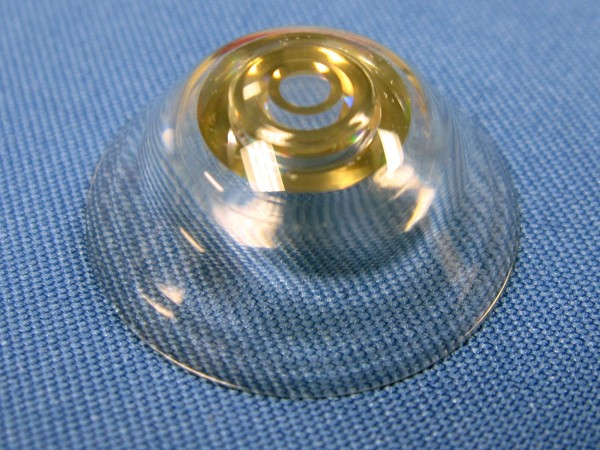Groundbreaking contact lenses give wearers superhero vision
Technology allowing contact lens wearers to zoom in on demand could be available in two years

A pioneering new form of contact lenses giving wearers superhero-like vision are being developed by scientists and could be available in just two years.
The telescopic contact lenses can magnify almost three-fold at the wink of an eye – literally.
The lenses have two parts: an inner area for normal vision, and an outer ring that magnifies sight 2.8 times.
Users don a special pair of glasses that work alongside the contacts to control the angle at which light hits the lenses. When light hits the outer area, their vision is magnified.
A wink from the right eye activates the zoom function, while a wink from the left eye returns the vision to normal.
The new technology also offers hope to millions suffering from vision loss and age-related macular degeneration (AMD), the most common cause of blindness in the elderly, affecting around 500,000 Britons.
Inventor Eric Tremblay, from the Swiss Federal Institute of Technology in Lausanne, said: "We think these lenses hold a lot of promise for low vision and age-related macular degeneration.
"A lot of people with severe AMD are really desperate for things they can try. The lenses would mostly be used for distance work, maybe when driving, and also for recognising faces."
The prototype lenses were presented on Friday at the American Association for the Advancement of Science in San Jose, California.
They were developed in association with the US Defense Advanced Research Projects Agency (Darpa), which earlier this week announced it was launching a project to develop next-generation prosthetic hands that feel real.
Speaking at the presentation in San Jose, Tremblay said: "Darpa fund things that are really out there – forward-thinking stuff.
"They're really interested in supervision. They'd like to produce a pair of binoculars you can put on in the blink of an eye, which is really cool but it's further than where we are today."
Tremblay explained that it could take another couple of years before his invention can be used to help sufferers of AMD.
"At this point, it is still research but we are very hopeful it will eventually become a real option for people with age-related macular degeneration," he said.
© Copyright IBTimes 2025. All rights reserved.





















